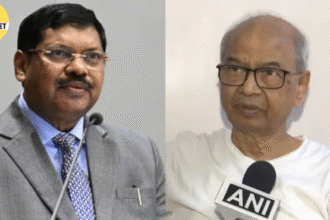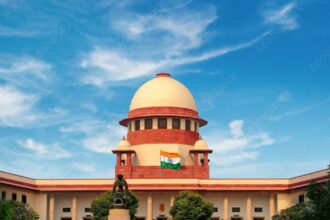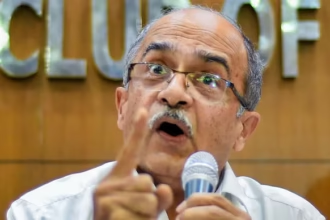A legal battle with enormous implications for India’s daughters has reached the Supreme Court. Beginning November 12, the Court will hear arguments regularly on whether the age of sexual consent should be reduced from 18 to 16. The question is not merely legal. It is social, cultural, and deeply personal, affecting nearly 250 million adolescents aged 10 to 19 in India.
The debate stems from the Nipun Saxena vs Union of India case, originally focused on safeguarding the privacy of survivors of sexual assault. Today, it has become a touchstone for deciding what India believes adolescence means.
Leading the demand for change is senior advocate Indira Jaising, who claims the current age of consent is socially outdated. The Union government, child rights bodies, and several social organizations have strongly pushed back.
Should India legalize sexual consent at 16? Here is the debate in its entirety.
Arguments in favor of lowering the age of consent
- Criminalizing teenage romance helps no one
Supporters claim that adolescents are engaging in relationships regardless of the law. Instead of criminalizing mutual affection, the law should:
- Recognize healthy teenage partnerships
- Reduce false accusations of rape
- Prevent boys from being jailed under POCSO in consensual situations
Many such cases arise when parents oppose interfaith or intercaste relationships.
2. Aligning with global norms
Age of consent in many developed nations:
- UK: 16
- Germany: 14–16 (circumstantial)
- Canada: 16
- Japan: 16 (varies by region)
Advocates ask why India should cling to 18 when the world has moved ahead.
3. Adolescents understand sexuality at a ripe age
Due to:
- Wider internet access
- Sex education exposure in urban spaces
- Physiological maturity arrives sooner
Proponents argue that awareness and readiness have shifted.
Arguments against lowering the age of consent
- Consent on paper is not consent in reality
India’s ground reality is still marred by:
- Patriarchy
- Gender power imbalance
- Lack of sex education in rural areas
- Family and community pressures
In such a landscape, a 16-year-old’s “yes” may hide coercion.
2. A paradise for predators
Lowering the threshold could make grooming easy and prosecution difficult:
- Online abusers can claim “mutual consent”
- Older men may exploit minors under legal cover
- Tracking intent becomes legally ambiguous
Child safety advocates warn of a “silent epidemic” of manipulation.
3. Teenage pregnancy and education disruption
Numbers paint a stark reality:
- 7.2% of Indian girls become pregnant before turning 18
- In West Bengal, this rises to 16.4%
- Most adolescent mothers drop out permanently
- Economic dependence and health risks multiply
At 16, many girls still struggle to choose between science and the arts. Should they be burdened with marriage and motherhood decisions?
4. Child marriage, trafficking, and forced conversions
Opponents fear the law will:
- Strengthen predatory networks
- Give legitimacy to child marriages disguised as “consent”
- Harm girls in communities where reporting itself is difficult
The core legal question
If an individual cannot vote, cannot marry, cannot sign contracts, cannot work full-time, cannot run for office, how can they be declared competent to consent to sex?
This contradiction stands at the heart of the fight.
Analysis: The elite view vs Bharat’s reality
The push to reduce the age of consent is driven primarily by a metropolitan lens. It assumes:
- Boys and girls freely date
- Both partners have equal power
- Families negotiate choices
- Schools provide sex education
- Police protect women
This may hold true in small pockets of urban India. But outside this bubble? The picture shatters.
In reality, girls in rural and semi-urban India often:
- Don’t control their own phone, freedom, or friendships
- Are pressured easily by older men or relatives
- Lacks any awareness of sexual health
- Face backlash for reporting abuse
- Have almost no autonomy over their bodies
Consent requires agency. Vulnerability is not a choice.
The Harsh Truth Many Activists Ignore
- Child Marriage
Lowering the age would give families and traffickers legal cover to marry off girls early. Child marriage already thrives in silence. This would be fuel. - Love Jihad and Forced Conversions
Jaisingh’s worldview may dismiss it, but ground reports suggest thousands of cases of:
• Grooming through romance
• Coercing minors into new religions
• Abandoning them once pregnant
Reducing age creates a perfect loophole: “she consented.” - Trafficking and Lodging House Exploitation
Predators don’t lurk in theory. They lurk at bus stands, coaching hubs, and railway tracks.
At 16, a girl’s “yes” can be manufactured and manipulated. - Vertical Power Imbalance
Where the man is older, richer, and authoritative:
Teacher, employer, neighbor, religious preacher
In such dynamics, what appears to be consent is often coerced compliance. - Digital Grooming Epidemic
Hypersexualized content + algorithmic targeting = minors unaware they’re being hunted.
If age lowers, predators will use the law as a shield.
Conclusion: Whose reality will India choose?
This debate isn’t about morality. It is about power.
Indira Jaisingh and similar activists propose policy as if the entire nation attends global-standard schools and lives in feminist-friendly families. But laws must protect the weakest, not serve the fantasies of the most privileged.
If a society:
- Cannot ensure a girl reaches college safely
- Cannot protect her from coercion in her own home
- Cannot guarantee her agency to say no
Then it has no business pretending she is ready to say yes.
There is room to limit POCSO misuse through peer-consent exemptions. But India cannot normalize sexual access to minors and call it empowerment.
The Supreme Court must decide: Will the law reflect urban ideology or Indian reality?
Because for millions of girls across the country, 16 is not freedom; it is the beginning of danger.









